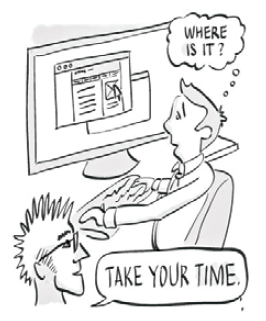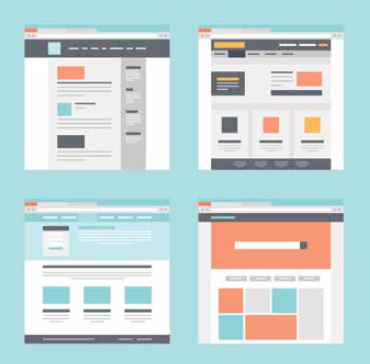Personas
A persona is depicted as a specific person, but is not a real individual. It’s a fictitious identity which is synthesised from observations of many people. These people include the ones analysed previously. It’s very important for personas to reflect the pattern that you’ve identified in your user base. Keeping this in mind, you can design and present your persona by inventing details to make it believable.
Scenarios
A scenario is an imaginary story featuring one of your personas. It’s the story of how your product fits into the life of your persona.
Storyboarding
Storyboarding is an effective way of capturing the how, why and when of someone using your product. This is represented in visual sequences of events showing the user’s interaction with your product. The visuals can be anything from a handmade rough sketch to an extremely polished comiclike design.
User testing
An actual user will play an important role in shaping the UX. In end-user beta testing, you‘ll ask a user to use your product and perform tasks planned for them.
This is a very straightforward approach, as you’ll directly see how much the user struggles to use your product. Here, you’ll know whether your design strategy was right, and if it wasn’t, where it went wrong. And you can make the corrections accordingly.
UX Design Principles
Now that you know what goes into UX designing, it’s time to look at the set of standard principles for UX design. These principles largely depend on the kind of product you’re building. They may either be generalised rules or rules set by the company for its own product.
1. UX is a life cycle
People experience things over time. Not everyone likes a particular product all at once. They might not have a good experience with your product at first.
Ask a user to perform the tasks you’ve planned
Thus, user experience is a life cycle that includes creating awareness, setting up the first time use, getting into regular use and even depreciating it.
2. Context is king
It’s easy to create a product, if you know how that product will perfectly fit into the user’s life. It’s thus necessary for a UX designer to carry out in-depth research about the product’s user base.
3. UX is invisible
UX hides behind the UI. A user will rarely notice your hard work behind offering such a seamless experience. Therefore, as a UX designer prepare to be ignored despite any success you have – nobody talks about your success. All the credit will probably be given to the UI designer.
4. Great experiences are simple
We’ve often heard the phrase ‘less is more’, however, this isn’t always true. UIs are shifting from volume-centered design to minimalistic design, but not every minimal design offers great user experience. A simple experience is not about volume, but clarity. A simple experience might appear easy to design, but in reality it’s not.
5. Great experience is about control
Things going out of control is something no one ever likes. The same is applicable to your product. Your product should always be in the control of your user. If it’s not, you can’t surprise him with an abundance of features. Your user shouldn’t be stuck at any step wondering what to do next.
As stated earlier, there may be many principles, but these are some of the standard principles followed by most UX designers. They don’t change across different platforms.
Conclusion
The growing dependence on technology means that developers are looking forward to making apps for every problem faced in our day-today lives. There’s an abundance of apps in app stores across platforms, however, not all of them go viral. Amongst the millions of apps in the stores some were noticed because of an exceptional idea turned into reality, while the others that featured simple ideas went viral because of their great UX design.
Many apps went viral simply because they had a sleek and simple UI. The all new Google Inbox is an example. Its newly introduced design is pleasing – be it the blue colour, the design or the mix of straight and curved edges. Additionally, the alarms and reminder features are great as well.
As mentioned earlier, your user could be the laziest person on the face of the earth. Considering this, Google employed machine learning algorithms to bundle your emails based on their content (primary, social, promotions, updates and forums), and it’s really accurate.
Additionally, these algorithms help keep your inbox spam-free. This provides the ultimate experience to the user as the application itself does the job of categorising his email.
UX has become one of the most essential parts of the product development process. Like we said earlier, anyone can come up with a UX design, but not everyone can do it well. This calls for a UX professional who will be dedicated to shaping the product and making it UX rich.
Mock ups for designs look like the above illustration
Among the important tasks included in the product development process are the wireframing, storyboarding and flow chart creation. There are lots of tools available to perform these tasks, the best of which are: Mockingbird, Framer, Lovely Charts, Solidify, Simulify, ForeUI and Creately. You may use these tools to create a perfect wireframe and flow chart for your product within minutes.
Finally, it’s the UI. Following the process of ideation, sketching and wireframing you’ll have a clear idea of how your UI should look. Once you’ve finalised the UX-rich UI design, you’re set to create the graphic elements for the UI.
Adobe provides the best tools for designing graphic elements. You can either use Photoshop, Illustrator, Fireworks or InDesign depending upon the type of element you’re designing. That being done, it should be submitted to the application developer for coding. You should supervise the UI from time to time to see whether the developer is making it exactly the way you want. At the end of the process you’ll see your hard work turned into reality.





